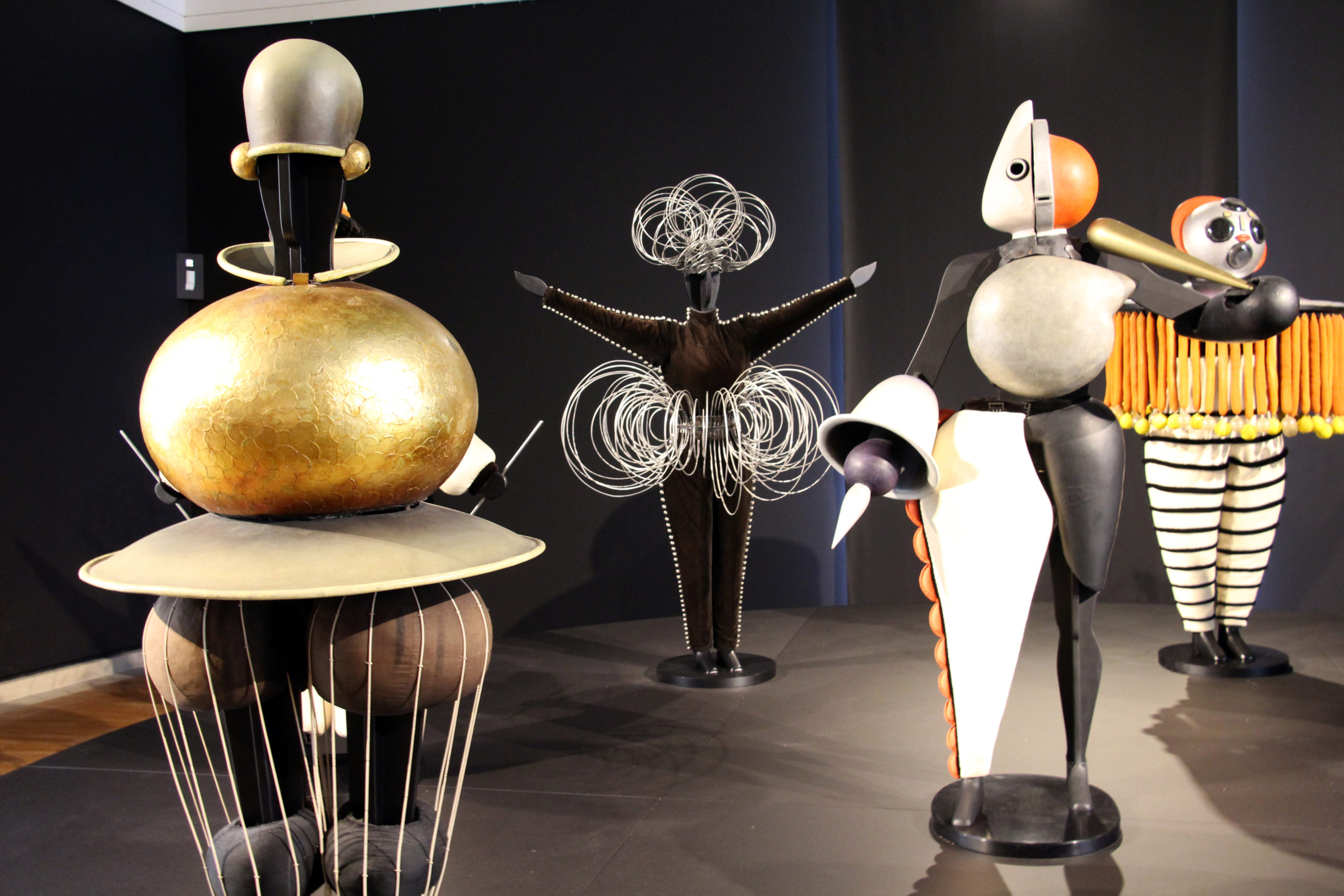For the last five years I’ve been interested in the Bauhaus, the famous architectural and design school. It started in 1919 in Weimar by a group of people, most of whom went through the WWI and dreamed to find new meanings and values, and build not only new houses but a new society with a better life. One of these people was Oskar Schlemmer. His methodology surprised me, because he teached future designers to dance and create theatre performances. “For what? They are not artists! – I thought at first – But anyway, there must be something in this experimental approach…” This is how I decided to research this historical figure. And I’d like to introduce him to you briefly.
The Beginning: Dances of Glass, Sticks and Shadows
In the Bauhaus, teachers (masters) were working in a cross-media approach, overflowing their main disciplines. Schlemmer also was quite a versatile person: painter, sculptor, draftsman, graphic artist, wall designer… His main spheres of interest were painting and theatre performance, and he understood these spheres metaphorically. Painting was connected to him with theory and apollonism (the antique god Apollo was a patron of the arts and sciences and symbolised order and harmony). “Dance is a Dionysian phenomenon, entirely derived from feeling”, Oskar wrote in his diary [1]. His soul was torn between them. However, this duality had in common Schlemmer’s deep interest in space and its perception. He used multidimensional and multi-figure compositions in his paintings. And the theatre seemed to him a place where space can be “experienced”. So the sense of space was the starting point of all his dance performances.
Sometimes, Schlemmer drew lines on the stage and they set the dancers’ movements. Sometimes, students worked with light, colours, illusions and the human body. And very often, they designed special costumes which made their bodies abstract and united them with different materials. Dancers had to invent new movements, research materials and space through the performance practise.
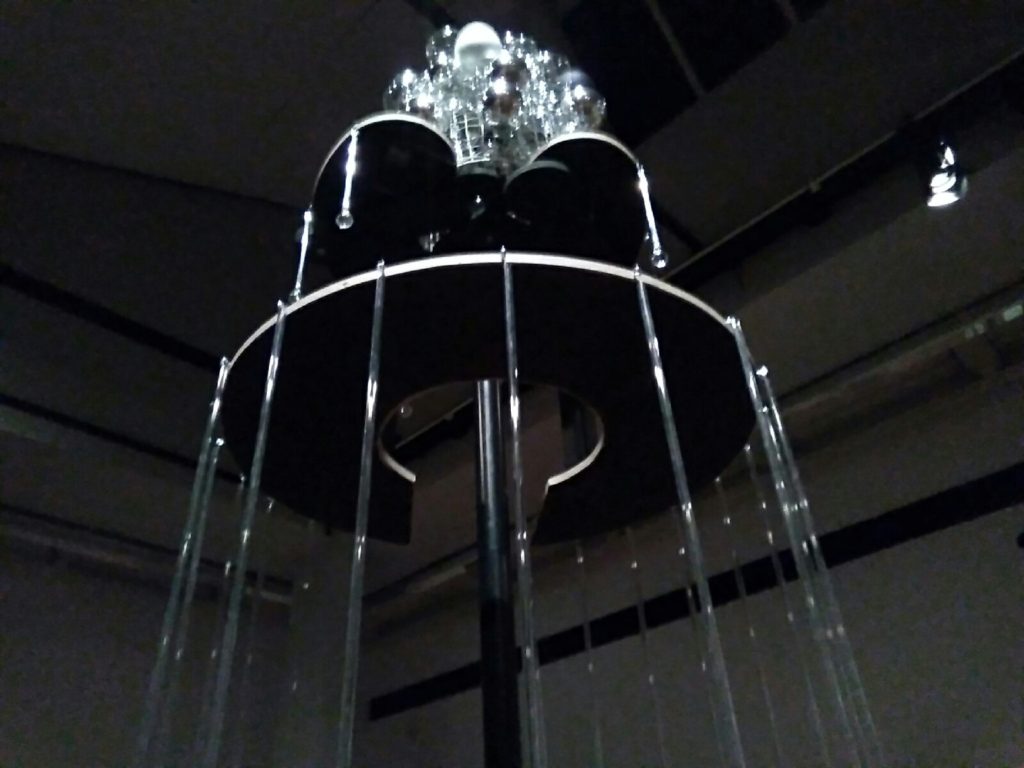
Look, for example, on the Stick Dance (Stäbetanz) where geometrical movements of long sticks were shown, while the dancer was invisible. It was hard to recognise that every movement was started from the human body. In the Glass Dance (Glastanz), the performer wore a skirt made from glass rods and was holding glass spheres in her hands and on her head. Of course, the material informed the way she moved.
The most famous work developed by Schlemmer was the Triadic Ballet (Triadisches Ballett). Three acts were painted in yellow, pink and black, and showed different moods and relationships between dancers. But what I found most interesting is that dancers performed the character of the material. They behaved like paper, spring, rubber ball, metallic disc… I was fascinated by the spiral dance from the third, the black part. If you can’t imagine, just search on YouTube for one of the reconstructions.
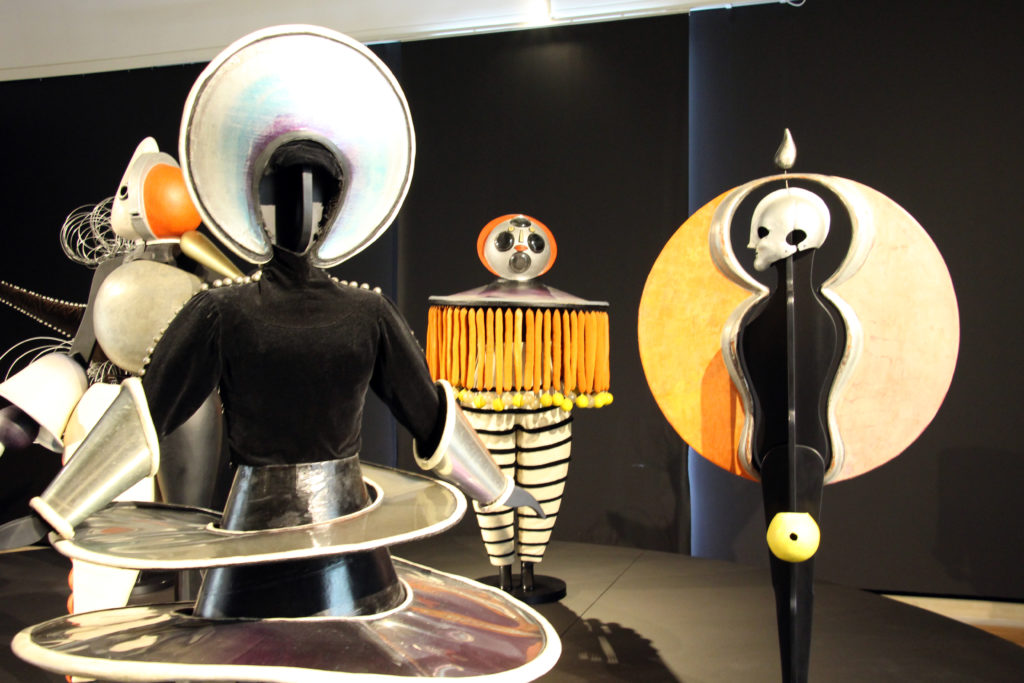
100 Years Later: Dancing with Virtual Reality
As Ina Conzen writes, Schlemmer’s vision was the “new” man, living in functional architecture, thinking clearly, and acting clearly, a man of a modern age that would never again sink into the chaos of war [2]. Unfortunately, he could observe the beginning of WWII, and during the last decades of his life he had to live in silence and fear. But history has its own rights to return and re-evaluate people and their legacy. I could prove it in my own experience, when in 2019 I visited the exhibition “100 Jahre Bauhaus”. It was dedicated to the anniversary of the school, and of course there was a part about the theatre workshop.
I saw reconstructions of the Stick Dance and couldn’t get a ticket to the Triadic Ballet. I saw original costumes. In the 1920s, they were breakthrough and avant-garde, in the 21st century this collection seemed to me old and simple. Probably I should just try it on and move in it to understand their uniqueness, hahah.
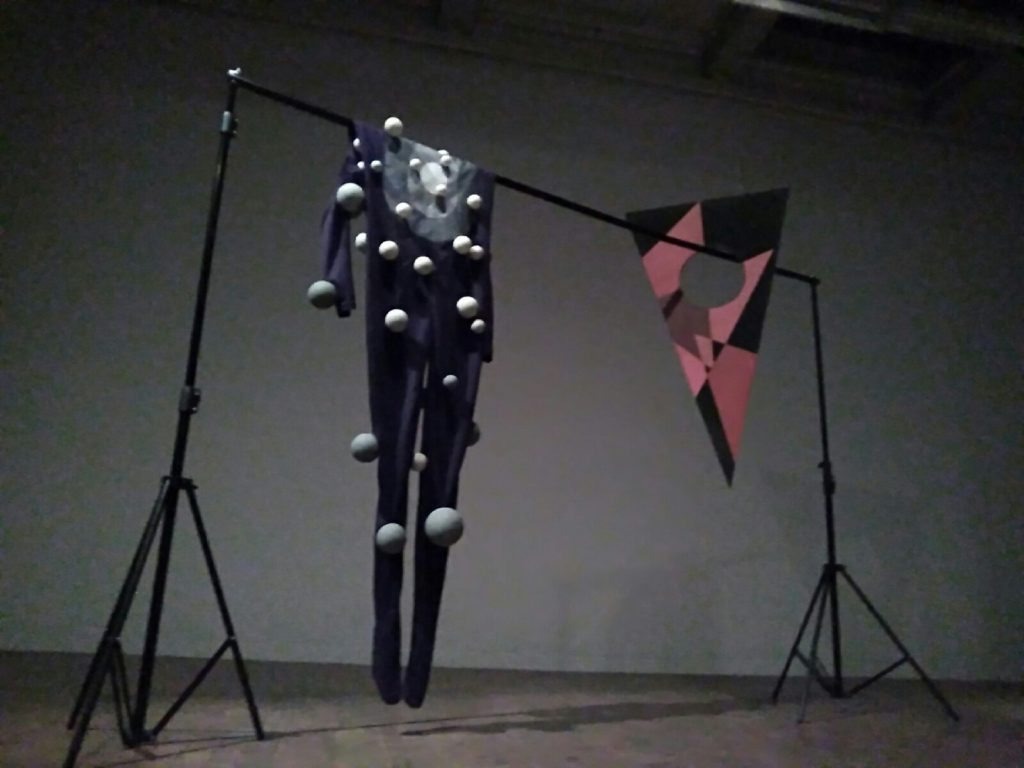
Near the historical experiments, visitors could see a new interpretation of Schlemmer’s ideas of interaction between space, human body and movement. They were invited to look at dances taking place in virtual reality (VR). And more than that – try to dance with a virtual partner! Of course I got in line burning with curiosity. If you want to imagine it, try to google “Das Totale Tanz Theater” or watch this teaser, while I’ll share my impressions with you.
At the beginning, I had to put a special construction on my head. It restricted my movements – I couldn’t run or make amplitude movements. In a second, I saw my partner – a virtual figure which was dancing in front of me. I tried to interact with it (him? her? I couldn’t understand…) using my hands or shifting corpus. And sometimes, we had a connection! The figure reacted to me and communicated. It was probably the strangest dance in my life! Could I feel my own body and space around me in another way? Yes, for sure! And I think if Schlemmer lived today, he would be one of the first to experiment with VR. But, in fact, we can explore his advices in everyday life. For example, he told the students that dancing movements “should start from your ordinary life, from standing and walking, and jumping and dancing will come much later” [3]. So, probably it is a good idea to perceive our routine movements as dance?
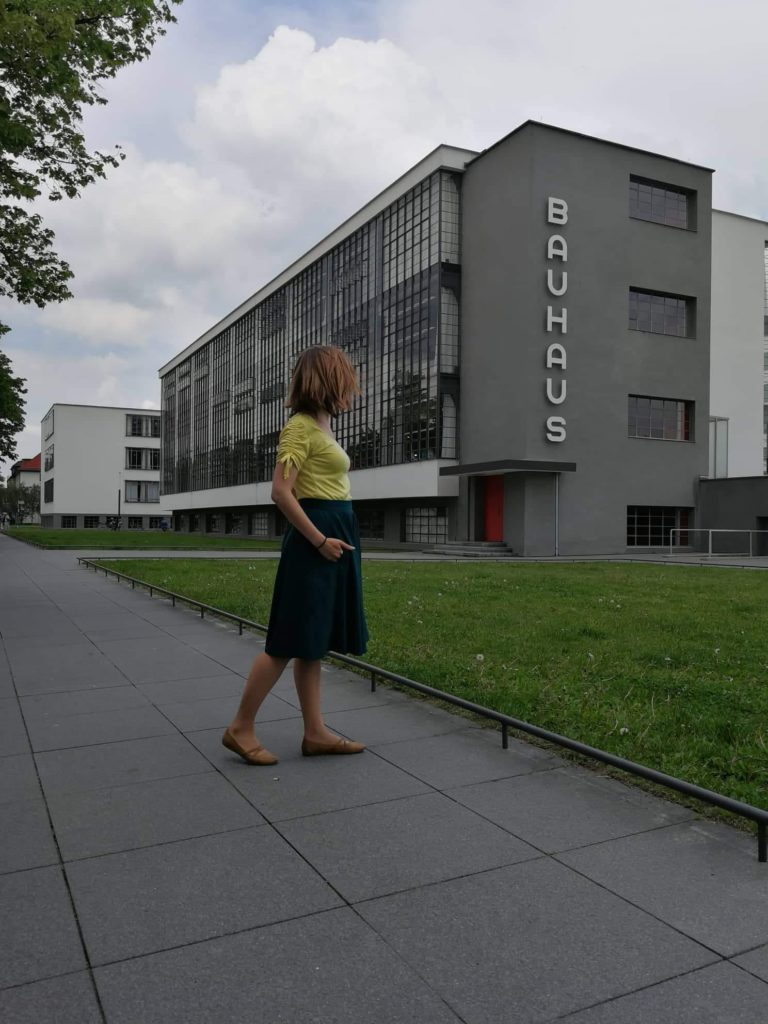
[1] RoseLee Goldberg, Performance Art: from Futurism to the Present. Moscow: Ad Marginem Press, 2019, P 130.
[2] Oskar Schlemmer: Visions of a New World / Ed. by Staatsgalerie Stuttgart, Ina Conzen. Hirmer Publishers, 2015.
[3] RoseLee Goldberg, Performance Art: from Futurism to the Present. Moscow: Ad Marginem Press, 2019, P 140.
XXXXXXXXXXXXXXXXX